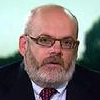Can Federal Reserve monetary policy be conducted in a way that benefits everyone in society?
The answer is yes, said St. Louis Fed President James Bullard, in a blog post on Thursday that he co-authored. Bullard is talking Thursday night.
Bullard made the case, again, for the central bank to adopt what is known as “nominal GDP targeting.”
His blog comes amid the talk, from critics on both the left and the right, that the Fed’s “quantitative easing” policy since the Great Recession benefitted the wealthy. The Fed engineered lower long-term interest rates by buying assets, raising the prices on stocks SPX, +0.36% and bonds that are owned by the wealthy compared with ordinary Americans.
Bullard has long argued for nominal GDP targeting.
Read: Fed’s Bullard: ‘Questionable’ benefits of zero rates should prompt new policy
Sam Bowman, senior fellow at the Adam Smith Institute, and an advocate of nominal GDP targeting, explained in a blog post that nominal GDP is the sum of all spending on the economy.
Nominal GDP can increase either because prices rise (inflation) or because there’s more stuff to go around (growth), he said.
Under Bullard’s program, the Fed would stop trying to target price rises and instead target total spending.
This would be an effort to avoid the boom and bust of current monetary policy where the outcome of a current fall in total spending is unemployment, Bowman said.
Bullard said this would lead to more well-functioning private credit markets, helping reduce income inequality by helping both borrowers and credits over their lifetimes.



